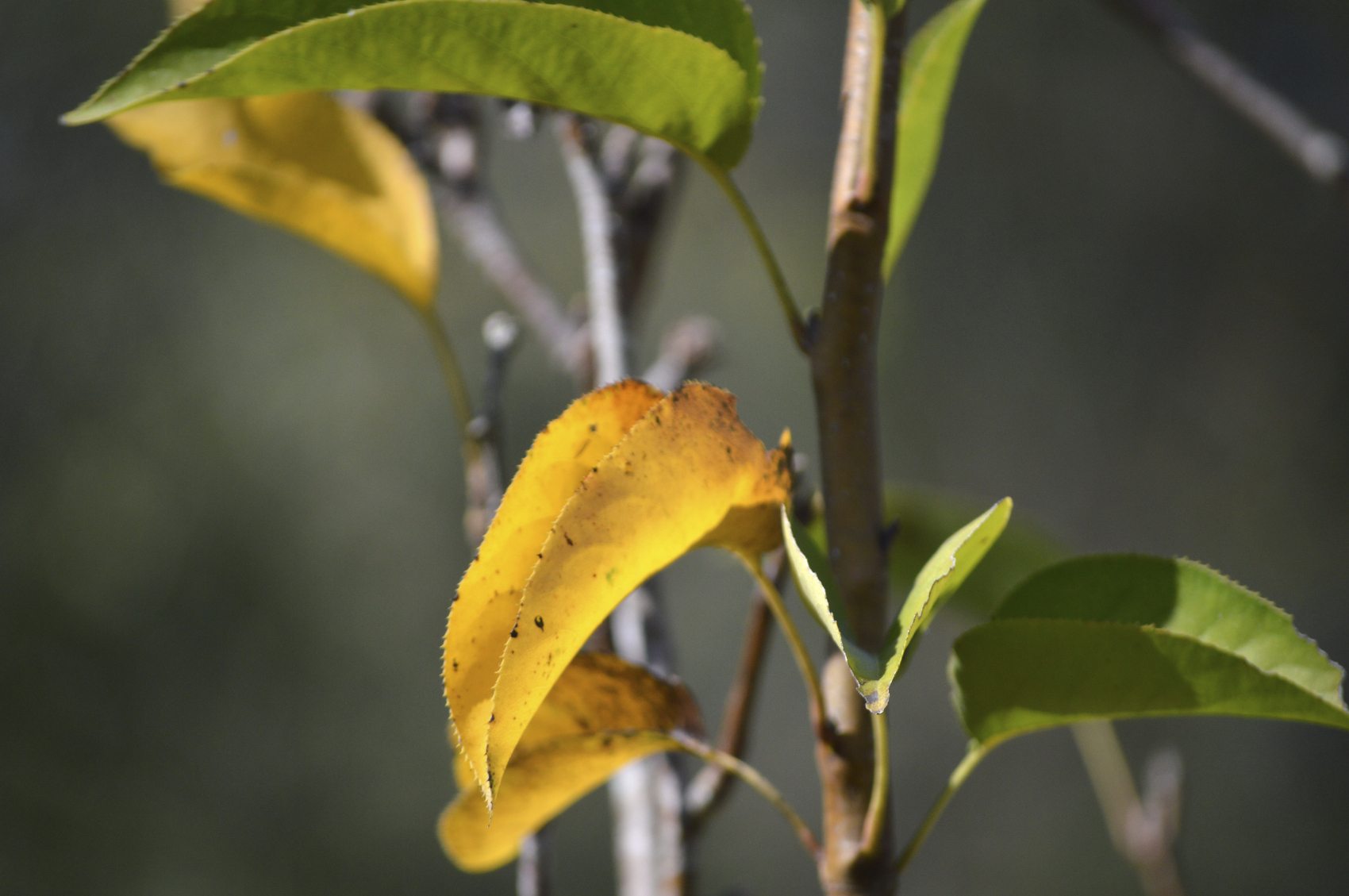Yellow Pear Leaves: What To Do When A Pear Tree Has Yellow Leaves


Pear trees are a great investment. With their stunning blossoms, delicious fruit, and brilliant fall foliage, they’re hard to beat. So, when you notice your pear tree leaves turning yellow, panic sets in. What could be causing this? The truth is a lot of things. Keep reading to learn more about what brings about yellowing leaves on flowering pear and how to treat it.
Why A Pear Tree Has Yellow Leaves
The most obvious cause of pear tree leaves turning yellow is, of course, autumn. If your days are getting shorter and nights are getting colder, that may be all there is to it. There are plenty of more troublesome causes though. Your tree could be suffering from pear scab, a bacterial disease that manifests itself in the spring with yellow spots that darken to brown or olive green. The disease spreads through splashed moisture, so remove and destroy all affected foliage, and water your tree in the morning when excess water will dry the fastest. Pear Psyllas, a small flying insect, may also be the culprit. These bugs lay their eggs on pear leaves and the babies, when hatched, inject the leaves with yellowing toxins. Spray petroleum oil on the leaves in late winter to deter egg laying. Your yellow pear leaves might also be caused by the stress of over or underwatering. Pear trees like infrequent, but deep, waterings down to 24 inches (61 cm.). Dig a foot or two (31-61 cm.) down in an area near your tree to get a sense of just how deep the moisture goes after a rainfall or heavy watering.
Yellow Pear Leaves Due to Nutrient Deficiency
Yellow pear leaves can also be a sign of a number of nutrient deficiencies.
- If your new leaves are yellow to white with green veins, your tree might have an iron deficiency.
- Nitrogen deficiency brings on small new leaves and dropped yellow mature leaves.
- Manganese deficiency causes new yellow leaves with green bands and dead spots.
- Zinc deficiency sees long, narrow stems with clusters of small, narrow, yellow leaves on the ends.
- Potassium deficiency causes yellowing between the veins on mature leaves that can eventually wither and die.
All of these deficiencies can be treated by the spread of fertilizers fortified in your missing nutrient.
Gardening tips, videos, info and more delivered right to your inbox!
Sign up for the Gardening Know How newsletter today and receive a free copy of our e-book "How to Grow Delicious Tomatoes".

The only child of a horticulturist and an English teacher, Liz Baessler was destined to become a gardening editor. She has been with Gardening Know how since 2015, and a Senior Editor since 2020. She holds a BA in English from Brandeis University and an MA in English from the University of Geneva, Switzerland. After years of gardening in containers and community garden plots, she finally has a backyard of her own, which she is systematically filling with vegetables and flowers.
-
 Moody Blooms For Spring: 8 Types Of Black Flowers To Add Drama To Spring Displays
Moody Blooms For Spring: 8 Types Of Black Flowers To Add Drama To Spring DisplaysFrom midnight burgundies to inky violets, several types of black flowers can enrich and embolden a spring display. Try these brooding bloomers for a moody garden
By Tonya Barnett
-
 Can Snake Plants Live Outside? Everything You Need To Know For Snake Plants Al Fresco
Can Snake Plants Live Outside? Everything You Need To Know For Snake Plants Al FrescoSnake plants can live outside given the right conditions, but be careful that they don't take over! Learn the best way to use snake plants in your landscape.
By Mary Ellen Ellis